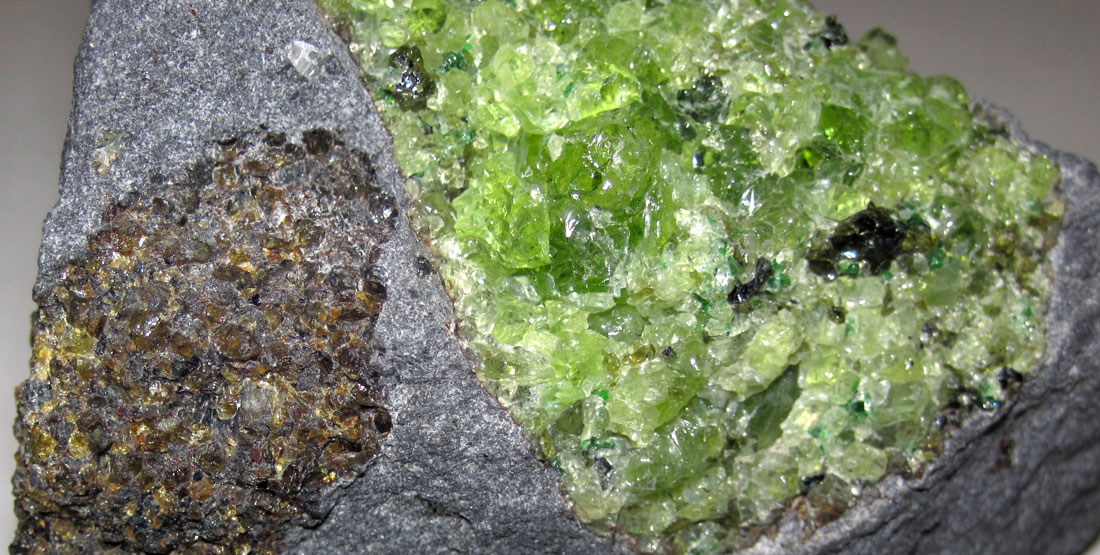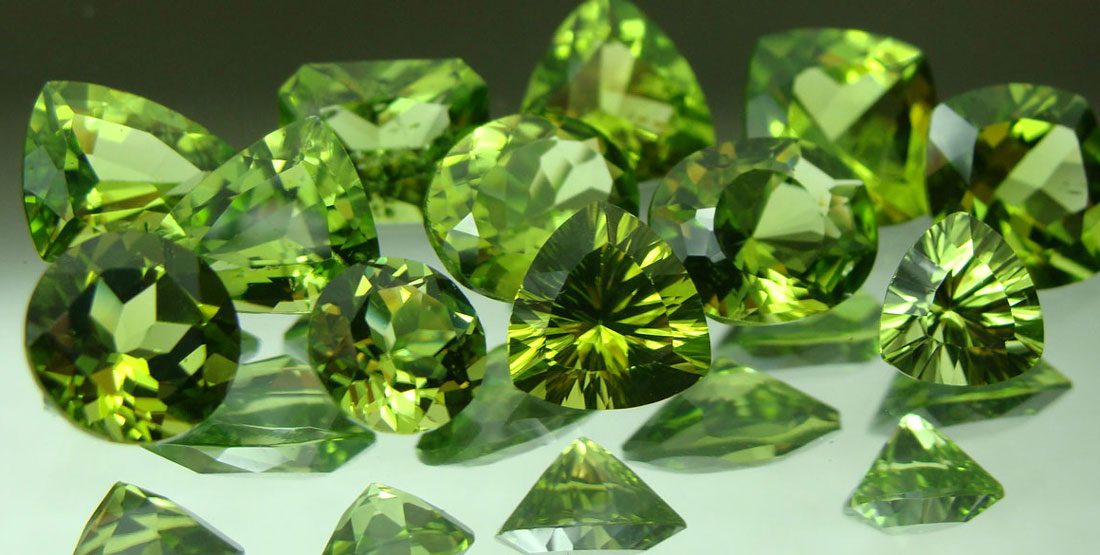- •
- •

Photo: “Peridotite mantle…” by James St. John is licensed under CC BY-ND 2.0.
- •
- •

Photo: “Peridot” by Jeff Schultz is licensed under CC BY-ND 2.0.
The Arabic word "faridat," meaning gem, is where the name for the gem peridot comes from. Peridot's stunning beauty and bright color caused the ancient Egyptians to call it "the gem of the sun." It was believed that peridot glowed with its own inner light even after sunset, and that miners used to locate the stones at night to retrieve them during the day.
Peridot is type of olivine, and comes in various shades of green, from light to a brilliant olive green. Olivine contains two types of minerals: fayalite and forsterite. Fayalite, with the mineral formula Fe2SiO4, contains large quantities of iron. Forsterite contains magnesium, and has a formula of Mg2SiO4. Olivine's formula is (Mg, Fe)2SiO4, showing the substitution of magnesium and iron. Peridot is the transparent form of forsterite.
An alternative birthstone for August is the gem variety of jade. The green color in jade is from trace amounts of chromium in the mineral.